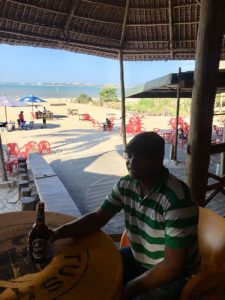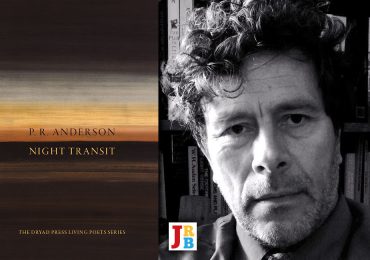About five months ago a very close friend of mine invited me to his wedding. His big day was Saturday, 21 July at the Hartbeespoort Dam. I’m in Bishops Lodge, Kimberley, when he contacts me, and I immediately consult my diary. I’m disappointed to learn that I will be in Tanzania on that day. I write back to my friend and tell him about my planned engagement.
His reply makes me think, a lot: ‘I think you were Vasco da Gama in a past life. You’re always on the road, my friend. Do your children even know the arms and lap of their father? Are you coping? Let me know if you change your mind.’
Something in me thumps and quivers, I find his words very unsettling. My face twitches like that of a man who has blundered into a spider’s web and is trying to tear off the strands.
‘Maybe my friend is right. I have a psychological problem,’ I say to myself.
A few years ago I came across the medical term Vagabond Neurosis—an abnormal impulse to travel. I learned that sufferers of this disorder are prepared to spend beyond their means. They sacrifice jobs, lovers and security in their lust for new experiences. Could this be what my friend wanted to say about me?
But my obsession with Tanzania is not new. It started with my love of African literature, history, geography and political studies in high school and university. Tanzania used to fascinate me, and it dominated my knowledge in these subjects. Everything important seemed to originate from this country. The tallest mountain in Africa, the deepest and largest freshwater lake in Africa, the great animal migration. Even what seems to me now to be useless history, like the meeting of the Welsh journalist and explorer Sir Henry Morton Stanley and the Scottish missionary and explorer David Livingstone, which took place in Ujiji, near Lake Tanganyika. In politics, places like Dodoma, Morogoro and Bagamoyo, where African and South African struggle heroes gathered, amounted to an escape away from apartheid brutality. So when my friends Zukiswa Wanner and James Murua spontaneously suggest a trip through Tanzania, with our writer friend Troy Onyango, I don’t hesitate to say yes. It’s one of those places that has always been on my to-do list.
I was visiting Zukiswa and James in Nairobi, where I had been invited to participate in the Goethe-Institut’s Artistic Encounters, and I was supposed to return home at the end of the visit. But instead of taking to the air, back to Johannesburg, I hit the road to Dar es Salaam.
We leave South B for Nairobi city centre at 6.30 am, aiming to avoid the terrible Nairobi morning traffic, to catch transport to Arusha, Tanzania, leaving at 8 am. The distance to Arusha is only 272 kilometres, but we’re warned it may take over four hours because of the traffic. The trip costs about 1500 Kenyan shillings per person on the Riverside Shuttle, which is about R120. But Zukiswa has already negotiated a 300 shilling discount, which she was granted when she showed the shuttle manager her new book, Hardly Working. The book, which is her travel memoir, documents the great experience she had previously with the Riverside Shuttle. As luck would have it, Ananias, the driver she wrote about in the book, is our driver again this morning. My luggage is a huge bag and backpack, containing the twenty-eight copies of my books, Way Back Home and Soweto, Under the Apricot Tree, which remain after my trip to Kenya, and some clothes. All our bags are put on the roof of the minibus.
The shuttle is a comfortable twenty-five-seater, and there are a few empty spots. I learn that we are going to pick up some more people who have just landed at Jomo Kenyatta International Airport. It takes about an hour and half to cover less than twenty kilometres. Our new guests, who hail from from Sweden, the United States, France and Canada, fill the shuttle, and at last we exit Nairobi via Mombasa Road.
I’m sitting with a guy from Sweden whose name is Kevin. He looks shy, but a small light of friendship gathers in his eyes when I introduce myself to him.
‘Is it your first time in Africa?’ I ask.
‘Yes. I’m so excited. Are you also going for the annual great migration?’ he asks.
‘No, I’m going to Dar. There’s no animal migration this year. The wildebeest, zebras and antelopes have all boycotted crossing the Grumeti River into Maasai Mara because Kenya has two presidents.’
We both laugh, and my joke succeeds in thawing the morning atmosphere.
‘I’m serious,’ I continue. ‘We Africans can speak to animals. Those that crossed the river last week are in favour of Kenyatta. Those that stayed behind are for Odinga.’
We pass towns and villages, Mlolongo, Kitengela, Kajiado, on our way to the border town of Namanga. Some villages are hidden in tall trees, and we pass grey lands and hills. It has rained a bit since I arrived in Kenya about a week ago, and new grass and many strange flowers are starting to grow. Here and there faint patches of green cling to the topmost branches of trees. Goats, sheep and cattle are scattered in all directions. One doesn’t need to be told that we are in the Maasai heartland; I can spot them everywhere, on the side of the road, in the villages and in the bush looking after their livestock. It is clear that the vast land belongs to these people. They are the ones that created its footpaths, mapped its length and breadth.
We stop at Paradise Gallery in Namanga for about twenty minutes, just enough time to browse its beautiful artwork. Outside, the call of birds fills the air. James and Troy order bean soup at the restaurant. Zukiswa and I prefer to tuck into the leftovers from yesterday’s nyama choma (goat meat) that we have brought along. Someone tries to get us to buy his art. First, he informs us—needlessly—that we are heading towards the Kilimanjaro Mountain, which is not very far away. He then tries to get Kevin to buy a walking stick, which he says contains Maasai magic and is good for hiking. No one buys his sales pitch. Finally, he tries to pitch his bird woodwork to us by telling us that there are more than five hundred species of bird in the area. It’s a fairly interesting factoid, but no one’s buying.
From the gallery, it takes less than ten minutes to drive to the Namanga border. This is the first time I’ve ever seen the immigration offices of two countries operating from inside one building, in the same huge room. Here, the counters of the Kenyan and Tanzanian immigration officials face each other, and the system seems to work. It takes less than fifteen minutes to get stamped into Tanzania—not bad—and when the Tanzanian official asks me how many days I want to spend in the country, I say five. This is a mistake, as we will be in Tanzania for the next eleven days … (More on this later.)
The landscape looks drier and more mountainous as we enter the Northeastern part of Tanzania. Despite our long journey, our eyes are sparkling with anticipation. Suddenly, someone behind the driver points at the looming white clouds to our left and shouts in high-pitched voice:
‘Kilimanjaro!’
To me, the mountain looks like a ghostly mist, high up in the sky. But I cannot explain the sudden pounding of my heart and the feeling of fulfilment I get when I look at it. Although I’ve been to Tanzania before, it’s the first time I’ve seen the mysterious mountain. Cellphones and cameras start clicking on all sides to capture the moment.
When we reach Arusha, the sun has passed its topmost point in the sky. This is Tanzania’s third-largest city, where three of Africa’s seven natural wonders are located within a hundred-kilometre radius. The Serengeti migration, Ngorongoro Crater, and Mount Kilimanjaro are all within arm’s reach. We book in at the Golden Rose Hotel (28,000 Tanzanian shillings per room), which is strategically located next to the Kilimanjaro bus terminus. We’ll use that same bus to travel to Dar es Salaam in the morning (30,000 TZS per person). I change R500 into 70,000 TZS, and we make our way across the street for some well-earned nyama choma.
The bus leaves for Dar at exactly 8.30 am the next morning, a distance of about 630 kilometres. The first stop is Moshi, 115 kilometres away. It takes us about three hours to reach the town, because by law no car is allowed to travel more than eighty kilometres per hour on the road. Moshi is only fifty kilometres away from Kilimanjaro, and the city itself is surrounded by a mountain range.
The landscape on the way to Dar is exhilarating, with its valleys, ridges and mountains, but the excitement is tempered by the fact that we have to limit our water intake: the bus doesn’t have a toilet facility, and will only stop in a few towns that happen to be quite far apart. Zukiswa and Troy are the only ones with Tanzanian SIM cards, so we are using Zukiswa’s data as a Wi-Fi hotspot to catch up on the news.
It takes us fourteen hours to reach Dar, and we arrive at exactly 10 pm. Troy is going to his friend’s place in one of the suburbs, while Zukiswa, James and I will be hosted at Ayeta Anne Wangusa’s house in Mbezi suburb. Ayeta is a Ugandan writer and activist, a founding member of FEMRITE (the Uganda Women Writers’ Association) and the African Writers Trust, and the executive director of Culture and Development East Africa (CDEA). She is also the author of a novel, Memoirs of a Mother.
James, Zukiswa and I are in Dar to facilitate three writing workshops. On Wednesday, 18 July, James will lead a workshop on blogging for CDEA at Eco Sanaa Terrace in Mikocheni B. James’s blog, jamesmurua.com, focuses on news of the African literature scene, and he has conducted workshops in Kenya, Uganda and Malawi. Zukiswa’s workshop is on the Thursday, and will focus on non-fiction writing. Mine is on the Friday, and I’m looking at the fiction part of creative writing.
Our workshops are all well attended, and on the last day Zukiswa and I hold a reading, where I manage to sell nine copies of Soweto, Under the Apricot Tree and Way Back Home.
 Before and after each workshop we have time to explore Dar. The four of us try to avoid the places we already know, and I make it a point not to go to Cape Town Fish Market and The Waterfront Sunset, because I went to those places on a previous trip, in 2005. Instead we visit Mbalamwezi Beach Club, Mel’s Place and 777 in Mikocheni. The food at these venues is delicious, and at 12,000 TZS you can get enough nyama choma for four people. Mbalamwezi remains my favourite spot, connected to a very beautiful, sandy beach, with a knockout view of the peninsula. They also play great hip-hop and African music. The only letdown is that on two occasions they don’t have a fish dish. But their beers are reasonable at just 3000 shillings, which makes up for it.
Before and after each workshop we have time to explore Dar. The four of us try to avoid the places we already know, and I make it a point not to go to Cape Town Fish Market and The Waterfront Sunset, because I went to those places on a previous trip, in 2005. Instead we visit Mbalamwezi Beach Club, Mel’s Place and 777 in Mikocheni. The food at these venues is delicious, and at 12,000 TZS you can get enough nyama choma for four people. Mbalamwezi remains my favourite spot, connected to a very beautiful, sandy beach, with a knockout view of the peninsula. They also play great hip-hop and African music. The only letdown is that on two occasions they don’t have a fish dish. But their beers are reasonable at just 3000 shillings, which makes up for it.
As I sip my bottle of Serengeti in Mbezi, I think about Dar’s fabled powers of seduction. I decide that it must have its origins in the friendliness of its people. They seem to look at you straight, and deeply in the eyes, as if to determine the nature of your inner life. Everyone here seems to have an authority and personality that radiates outwards, always reaching towards love and friendship. Wherever I travel, throughout Africa and Europe, I make these kinds of discoveries. If the search for this knowledge is the reason for my irresistible urge to explore the world, then perhaps I can make peace with my Vagabond Neurosis.
This is the second instalment in the travelogue of Niq Mhlongo’s 4459-kilometre journey through Tanzania, Zambia and Zimbabwe. Read the first episode, Borders and Books, here, and tune in next issue to find out the consequences of his overstaying his welcome in Tanzania.
- Niq Mhlongo is City Editor; his latest book is an anthology of short stories, Soweto, Under the Apricot Tree. Follow him on Twitter.





